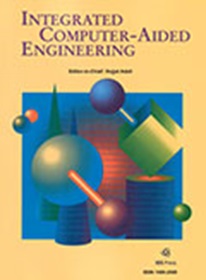连续无监督学习的动态学习率
IF 5.3
2区 计算机科学
Q1 COMPUTER SCIENCE, ARTIFICIAL INTELLIGENCE
引用次数: 1
摘要
稳定性和可塑性之间的困境在机器学习中是至关重要的,特别是当考虑非平稳输入分布时。这个问题可以通过持续学习来解决,以减轻灾难性的遗忘。该策略先前已被提出用于监督和强化学习模型。然而,对无监督学习的关注很少。这项工作提出了一个动态学习率框架的无监督神经网络,可以处理非平稳分布。为了使模型在改变其特征时适应输入,提出了一种不仅取决于训练步长而且取决于重建误差的可变学习率。在实验中,测试了不同配置的经典竞争神经网络、自组织地图和增长神经气体的每神经元或每网络动态学习率。文档聚类任务的实验结果证明了该方法对现实问题的适用性。本文章由计算机程序翻译,如有差异,请以英文原文为准。
Dynamic learning rates for continual unsupervised learning
The dilemma between stability and plasticity is crucial in machine learning, especially when non-stationary input distributions are considered. This issue can be addressed by continual learning in order to alleviate catastrophic forgetting. This strategy has been previously proposed for supervised and reinforcement learning models. However, little attention has been devoted to unsupervised learning. This work presents a dynamic learning rate framework for unsupervised neural networks that can handle non-stationary distributions. In order for the model to adapt to the input as it changes its characteristics, a varying learning rate that does not merely depend on the training step but on the reconstruction error has been proposed. In the experiments, different configurations for classical competitive neural networks, self-organizing maps and growing neural gas with either per-neuron or per-network dynamic learning rate have been tested. Experimental results on document clustering tasks demonstrate the suitability of the proposal for real-world problems.
求助全文
通过发布文献求助,成功后即可免费获取论文全文。
去求助
来源期刊

Integrated Computer-Aided Engineering
工程技术-工程:综合
CiteScore
9.90
自引率
21.50%
发文量
21
审稿时长
>12 weeks
期刊介绍:
Integrated Computer-Aided Engineering (ICAE) was founded in 1993. "Based on the premise that interdisciplinary thinking and synergistic collaboration of disciplines can solve complex problems, open new frontiers, and lead to true innovations and breakthroughs, the cornerstone of industrial competitiveness and advancement of the society" as noted in the inaugural issue of the journal.
The focus of ICAE is the integration of leading edge and emerging computer and information technologies for innovative solution of engineering problems. The journal fosters interdisciplinary research and presents a unique forum for innovative computer-aided engineering. It also publishes novel industrial applications of CAE, thus helping to bring new computational paradigms from research labs and classrooms to reality. Areas covered by the journal include (but are not limited to) artificial intelligence, advanced signal processing, biologically inspired computing, cognitive modeling, concurrent engineering, database management, distributed computing, evolutionary computing, fuzzy logic, genetic algorithms, geometric modeling, intelligent and adaptive systems, internet-based technologies, knowledge discovery and engineering, machine learning, mechatronics, mobile computing, multimedia technologies, networking, neural network computing, object-oriented systems, optimization and search, parallel processing, robotics virtual reality, and visualization techniques.
 求助内容:
求助内容: 应助结果提醒方式:
应助结果提醒方式:


